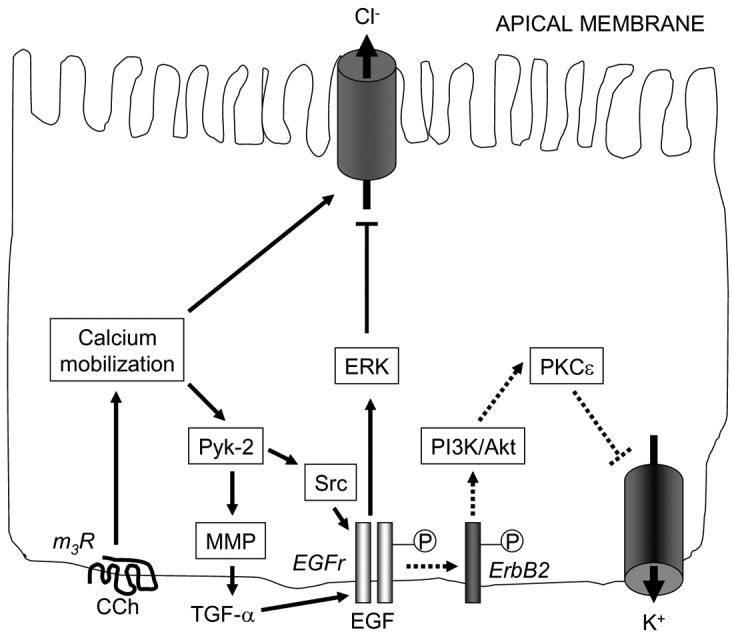Figure 1.

Pathways centering on the receptor for epidermal growth factor (EGFr) that regulate chloride secretion in colonic epithelial cells. Pathways that are activated by binding of EGF to EGFr are shown on the right-hand side and indicated by broken lines; those activated via EGFr transactivation are shown on the left-hand side of the figure, with solid lines. Ligands for receptors coupled to Gq, such as the m3 muscarinic receptor for the agonist, carbachol (CCh), initially cause calcium mobilization that can stimulate chloride secretion. However, they subsequently activate a negative signaling cascade via EGFr to limit further secretion. EGF can also inhibit secretion via its receptor, but via distinct signals that inhibit basolateral potassium channels. Please note that other components of the chloride secretory mechanism (Na+,K+ ATPase, Na+/K+/2Cl− cotransporter) are not shown in the figure for simplicity. MMP, matrix metalloproteinase; TFG-α, transforming growth factor α; ERK, extracellular signal-regulated kinase; PI3K, phosphatidylinositol 3-kinase; PKC, protein kinase C. For additional details, see text.
